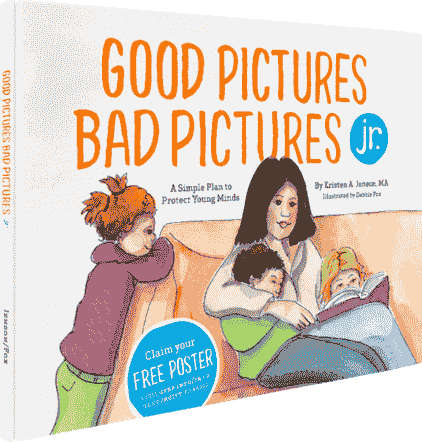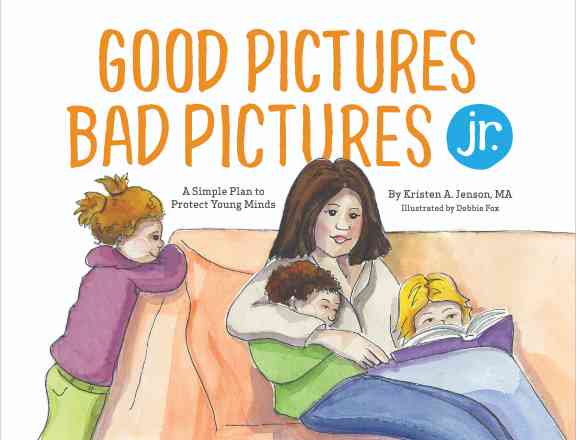
How a Fearless Mother-Daughter Duo Teach Parents to Protect Children from Porn
This month we celebrate the powerful influence of mothers who take action to protect children!
Does your community need someone to speak up and help parents be more aware of the challenges kids face today with pornography? You’re about to meet an inspiring mother and daughter who just jumped in and started teaching parents how to protect children.

Julie Nelson and her daughter, Shasta Knight, didn’t wait for a fancy title or the right time in life to start speaking up. They just got to work and have already given over 50 presentations to schools, church groups, family reunions, and treatment programs. They have talked to parents, teens, and young adults and usually reach 100 – 300 people in the audience. Julie says, “We’re just trying to help people understand what they're up against.”
Meet Julie and Shasta
Julie raised six children. After 36 years of kids at home, she now has an empty nest. She works for a university extension in her small town, and owns her own dojo where she teaches karate.
Shasta is busy with four kids ages 3 through 10. She is a freelance graphic designer and a minimalist who likes to live simply and focus on what is most important.
Changing times and challenging cultures
Shasta and Julie have had different experiences because of the contrasting times in which they raised their families.
Julie looks back and can see how things have changed. Raising her last three kids was much more difficult than the first three because of the rise of technology. When Shasta was growing up, they talked openly about many things - but it was the beginning of the computer age, so pornography wasn’t an issue then like it is now. She feels that mobile phones particularly have changed everything.
Shasta understands that the culture her children are growing up in now is highly sexualized. She constantly talks about protecting children, and other young parents call her with questions. Fortunately, her friends are not tired of hearing about it yet!

Getting the neighbors on board to protect children
Because Shasta has sparked conversations in her neighborhood, many of her friends are now planning to wait until their kids are older teens to have mobile phones. She explains, “We're just teaming up together and saying, 'Hey, let's all just wait.'” Having a few friends with similar house rules takes some of the pressure off kids to keep up with their peers.
Of course, parents have unique needs and different plans regarding mobile phones and kids, but building agreement among families that you spend time with is powerful when possible.
Real run-ins with pornography
Seventeen years ago, Julie had a problem with pornography in her home and couldn’t find any answers. She felt It was “pretty depressing” at the time. She kept searching, and over time more information came out about pornography addiction that helped her understand what her family was experiencing.
Not just one, but two of Shasta’s kids were exposed to pornography at school on classroom iPads. Her son saw it in second grade. Nearly the same thing happened to her daughter two years later when she used an iPad right after another student viewed pornography. Shasta said, “We had to have the whole birds and bees conversation when she was in second grade.” Her kids had a lot of questions, and Shasta felt sad about their innocence being taken away when they saw things they didn’t understand. Both times Shasta talked to the teacher and helped set up restrictions on the school iPads to protect children.
Now Shasta talks very openly with her kids. Her 3-year-old has read Good Pictures Bad Pictures Jr. with mom and dad. He can give an age-appropriate definition of what pornography is and knows that he should turn it off, turn away, and tell his parents when he sees it.
If you have kids or grandkids ages 3-6, Good Pictures Bad Pictures Jr. is a great way to start teaching them in a safe and age-appropriate way.
[[CTA]]
We never stop talking about how to protect children
These experiences made Julie and Shasta want to share what they had learned to help other parents. After attending a Utah Coalition Against Pornography Conference together, they “realized nobody knows any of this stuff.”
They weren’t part of an organization, they didn’t have degrees in psychology and they weren’t experienced public speakers. But they didn’t let that stop them! Shasta volunteered to teach a lesson in church - then the word got out and people started asking them to speak. They say that teaching in their community “was an accident, but it's been a good accident.”

Understanding what people need
Julie shares what she has learned from speaking:
“We hear a lot of sad stories of people that were completely blindsided. We have learned that people are not talking about it enough. They are still unaware of what's taking place around them. People want a step by step plan for what to say. They love the CAN DO Plan from Protect Young Minds because it gives them a place to start. But it feels like some people want a Band-Aid – they want the answer that's going to fix this problem. But our whole presentation is about layering: layer your protections, layer your filters, layer those conversations. You just keep building those layers to protect children. That might be a little intimidating for people, but that's why we're talking to them about it.”
Julie and Shasta like to teach all ages together – the whole family from age 12 up through grandmas and grandpas – and get them all involved in the discussion. Julie says, “It’s a family package. You need everybody on board helping each other because the kids understand the technology. Many parents can't do it without the kids helping them.” Shasta agrees with the whole-family game plan. “Our kids know we’re on their team and that together we can protect ourselves and our home.”
Parents of grown-up families still have influence
Even when kids become adults, parents can’t be silent on this issue! Julie still talks with her grown children about the effects of pornography and technology. One of Julie’s sons is recovering from pornography addiction, and they work together to set up filters that will help him with his goals. “With my adult kids now, I talk about what relationships are supposed to look like and what love looks like, because they've grown up in this false, pornified culture. We are trying to catch up and help them to connect to the real world.”
Julie and Shasta encourage grandparents to have a plan to keep their grandkids safe when they are visiting. Shasta said, “Once we make them aware, they're often concerned. They’ll say, ‘Wow, my grandson was just at my house and had my iPad all weekend.’ Then they panic because they don't want to be the reason that their grandkids have a problem.” Parents and grandparents can agree to keep the same rules at both homes.
Staying informed to protect children
Speaking in public means Julie and Shasta feel responsible to stay up to date. They follow the research and attend conferences. They recently flew across the country to attend the Coalition to End Sexual Exploitation Summit in Washington DC.
Mother and daughter often end up learning from different angles because Julie is coming from a “bruised and battered” background from navigating the effects of pornography on her family, and Shasta is working to protect her young family from experiencing that kind of pain. Even when reading the same article, they can come away with different ideas.
Julie and Shasta love teaming up to teach. They found that they can reach more hearts because they are at different stages in life. People relate to them differently; after a presentation one group will line up to talk to Shasta and another group will gather around Julie.

What they wish every parent knew
Julie has a great desire to help others avoid the problems that pornography created in her family. She says,
“There's so much I want parents to know. Everything that it's taken me 20 years to know today. They need to get educated. You can't ignore it. Nearly every child will see pornography before they're 18 years old and that’s a reality that we've got to start with. They need to take a step. It's never too early and it's never too late.”
Shasta wants parents to be aware of the risks, but not be afraid to let kids use technology and media to accomplish good things. Parents can come alongside their kids and help them learn to navigate one new thing at a time. When they have shown some good decision-making skills in one context, they can move on to another one - whether that is texting, using social media or managing a new device. With parents’ guidance, kids can learn self-control and safety skills.
Speaking up in their own way
Julie and Shasta saw a need and jumped in to help. Over time, their presentations have improved. Even though it takes time out of their busy lives, they find a lot of satisfaction in helping people.
Business guru Seth Godin reminds us that we don’t have to be experts to make a difference:
"Once you understand that there are problems waiting to be solved, once you realize that you have all the tools and all the permission you need, then opportunities to contribute abound. No one is going to pick you. Pick yourself."
Caring and learning about how to protect children from pornography is enough to qualify someone to start speaking up. As Julie and Shasta have found, people are grateful when someone starts the conversation.
They learned that if you want to make a difference, it doesn’t matter how big of an audience you reach. People in your community need to be more aware of the challenges kids face today and how to protect children.
Teaching can be as simple as sharing a blog post with a friend. talking with extended family, or offering to teach a parent meeting at school. Speaking up helps others feel comfortable to do the same. The more we talk about protecting children, the safer all our kids will be.



Good Pictures Bad Pictures Jr.
“I highly recommend this book to all people with children. A must have for all parents!” —Amazon Review







